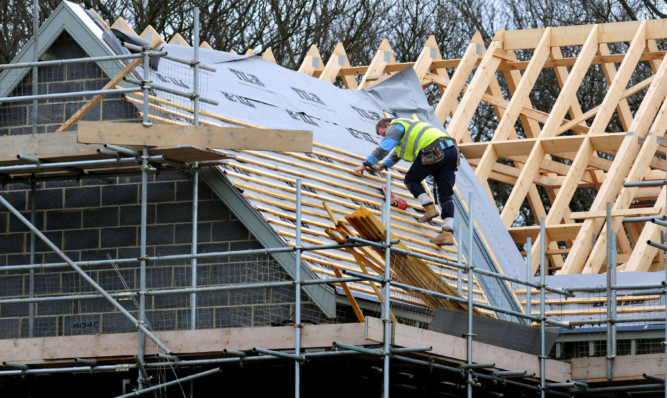Housebuilder Taylor Wimpey reported a strong start to the spring selling season as it looks to build on last year’s 67% rise in profits to £450 million.
The performance was underpinned by the UK’s significant imbalance between demand and the supply of new homes.
It completed the sale of 12,454 properties in the UK last year, a rise of 6.5% on a year earlier, as it benefited from an 11.5% increase in its total average selling price to £213,000.
A new scheme for approximately 350 homes at the Grange, Ethiebeaton, has been approved by Angus Council and the builder also has developments at locations in the Dunfermline area.
With the UK housing market remaining healthy, chief executive Pete Redfern believes the current strong performance can be sustained and improved upon.
He added: “Customer confidence is high with good levels of employment and an affordable mortgage environment.”
The beginning of the spring selling season has seen both demand and trading at the better end of expectations.
Net private sales rates for the year to date of 0.70 homes per outlet per week are at “healthy levels” and within the range that Taylor sees as sustainable.
Building costs increased by about 5% last year but Taylor said the return to more normal market conditions should ease the pressure this year.
A difficult labour market and the challenge of delivering its homes on time meant the company’s customer satisfaction rate fell to 87% from 90% a year earlier.
Taylor said this figure remains high in comparison to historic trends, but admits that it is disappointed that the rate has fallen.
The firm said: “During 2014 we began an in-depth review of every aspect and stage of our customer journey, to identify areas of improvement and to deliver a better homebuying experience for customers.”
Meanwhile Ogilvie Group Developments Ltd, the commercial property arm of Stirling-based Ogilvie Group, cut its pre-tax loss from £158,000 to £54,300 last year from a turnover down 10% at £95,000.
The main reason was the slashing of administrative expenses from £123,364 to just £11,931.
The division is the newest addition to the group and carries out projects in the regeneration and mixed use sector, working with other joint venture partners where appropriate.
The Ogilvie Group started life as a construction company and a diversification strategy has seen it branch out. Today the group has a turnover of more than £200 million and employs more than 400 people.
The development company’s directors are satisfied there are adequate resources to meet liabilities.
